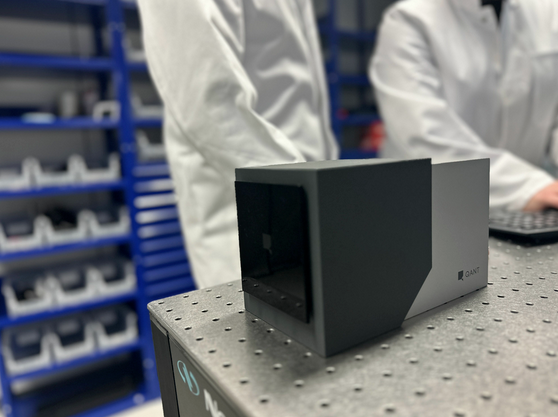 Small, lightweight and highly sensitive: with a magnetic field sensor the size of the palm of a hand, Stuttgart-based start-up Q.ANT wants to open up industrial fields of application. One could be medical technology. In the near future, the quantum sensor should be able to control prostheses via muscle signals. Potential partners and interested parties can find out more about this innovative technology at the Hannover Messe from April 17 in Hall 2, Stand C61.
Small, lightweight and highly sensitive: with a magnetic field sensor the size of the palm of a hand, Stuttgart-based start-up Q.ANT wants to open up industrial fields of application. One could be medical technology. In the near future, the quantum sensor should be able to control prostheses via muscle signals. Potential partners and interested parties can find out more about this innovative technology at the Hannover Messe from April 17 in Hall 2, Stand C61.
Alongside quantum computing, quantum sensing is seen as a technological promise for the future. It could accelerate industrial progress and make things possible that are at best known from science fiction movies. The Q.ANT magnetometer is a step in this direction. It enables the measurement of the smallest magnetic fields in the range of 300 picotesla, and this at room temperature. Until now, this sensitivity range could only be achieved by cooling sensor systems to absolute zero at -273 °C or by heating them up to 150 °C. As a result, systemic integration in industrial applications was hardy feasible.
In contrast, Q.ANT's magnetic field sensor achieves the high sensitivity at room temperature and paves the way to applications suitable for everyday use. This is the first time that a fully integrated diamond-based quantum sensor is advancing into areas where the detection of muscle signals becomes realistic. The corresponding proof has already been provided with a laboratory setup. Three to four years of development work are still needed before the technology is ready for application. Then, magnetic field sensors built into prostheses will be able to detect muscle signals and trigger corresponding movements. In this way, a prosthetic hand could close into a fist or reach for a cup. The sensors, including the control technology, are still too large to be integrated into prostheses. In the coming years, however, they should shrink from the size of a tin can to matchbox size.
However, Q.ANT founder and CEO Michael Förtsch can also envision areas of application in other industrial sectors that are already being considered, namely "wherever ultra-fine currents need to be measured, such as in the electronics industry for quality control of circuit carriers or hard drives, but also to identify fault currents in power chips or batteries." Other possible applications are in medical technology for early detection of diseases in the brain, or localization applications in the automotive industry. Förtsch describes the area of human- machine interaction as a "medium-term goal." Quantum sensor technology makes many things conceivable, including the possibility that machines will one day be controlled by thoughts.
Q.ANT wants to demonstrate the potential of its magnetic field sensors for various industrial applications at the Hannover Fair by means of a display: an exhibit consisting of an artificial hand made of glass, through which a weak current flows, and a quantum sensor. "We read the magnetic field generated by the current from the demonstrator without contact. This allows the sensor to open and close the prosthetic hand," Förtsch explains. With the trade fair appearance, Q.ANT wants to draw the attention of potential industrial partners to the new technology - in order to then ideally develop it further for a concrete application.
www.qant.gmbh


















































































